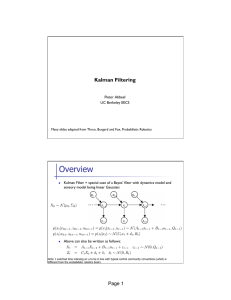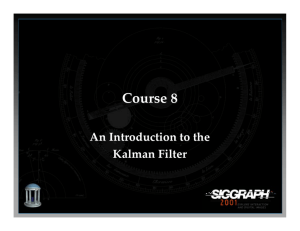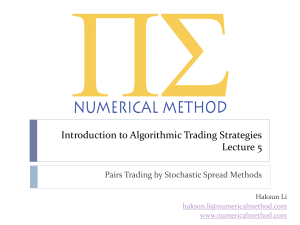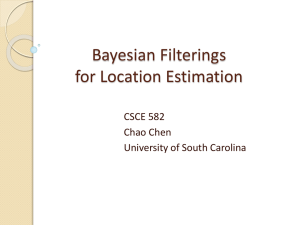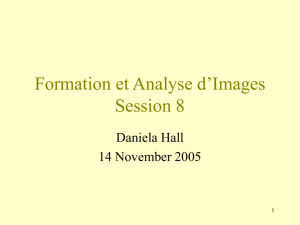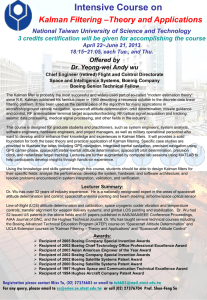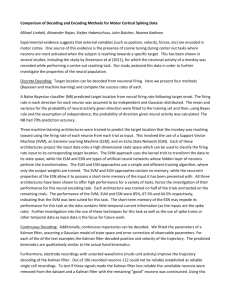History of Human-Computer Interaction
advertisement
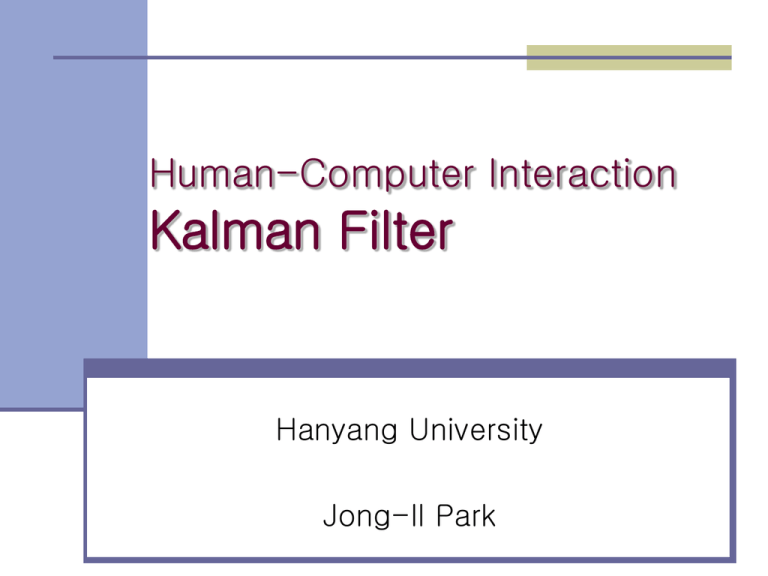
Human-Computer Interaction Kalman Filter Hanyang University Jong-Il Park Rudolf Emil Kalman Born 1930 in Hungary Born 1930 iHungary BS and MS from MIT BS and MS from MIT PhD 1957 from Columbia Filter developed in 1960-61 Filter Now retired Now retired What is a Kalman filter? Just some applied math. A linear system: f(a+b) = f(a) + f(b). Noisy data in hopefully less noisy out. But delay is the price for filtering... Pure KF does not even adapt to the data. What is it used for? Tracking missiles Tracking missiles Tracking heads/hands/drumsticks Extracting lip motion from video Fitting Bezier patches to point data Lots of computer vision applications Economics Navigation Navigation Typical Kalman filter application system noise controls system system state (desired but not known ) measuring device measurement noise observed measurement Kalman filter optimal estimate (system state) Simple example Observation 1 Observation 2 Combine the two Combine estimates Combine variances Combined estimates Online weighted average! But suppose we are moving… Not all the difference is error Some may be motion Some may be motion KF can include a motion model Estimate velocity and position Process model Describes how the state changes over time The state for the first example was scalar The process model was nothing changes A better model might be A State is a 2-vector [ position, velocity ] positionn+1= positionn + velocityn * time velocityn+1= velocityn Measurement model “What you see from where you are” Predict Correct KF operates by KF operates by Predicting the new state and its uncertainty Correcting with the new measurement Correcting with the new measurement Predict Kalman filter Correct Formulation Kalman Filter Kalman filter assumes linearity Only matrix operations allowed Measurement is a linear function of state Next state is linear function of previous state state If nonlinear No way? projection If nonlinear Extended Kalman ilter(EKF) Nonlinear Process (Model) Process dynamics: A becomes a(x) Measurement: H becomes h(x) Filter Reformulation Use functions instead of matrices Use Jacobians to project forward, and to relate measurement to state Formulation - EKF Extended Kalman filter Jacobian Partial derivative of measurement with respect to state If measurement is a vector of length M and state has length N Jacobian of measurement fucntion will be MxN matrix of numbers (not equations) Often evaluating h(x) and Jacobian(h(x)) at the same time cost only a little extra Simulation – Exact R Convergence of covariance P Simulation – Bigger R Simulation – Smaller R Concluding remarks Kalman filter is a very useful and powerful Optimal in many sense Linear system -> Kalman filter Nonlinear system -> Extended Kalman filter Effect of initial value Covariance matrix – less sensitive Measurement noise Over-estimated -> slow convergence Under-estimated -> noisy output Resources Kalman filter website maintained by Greg Welch


